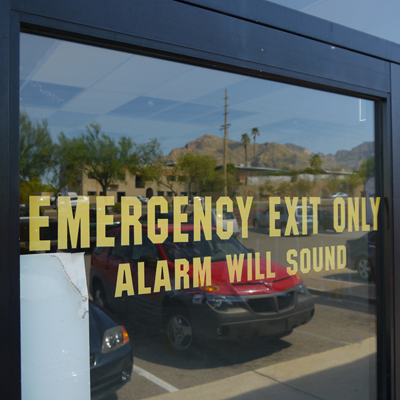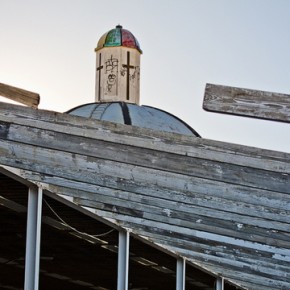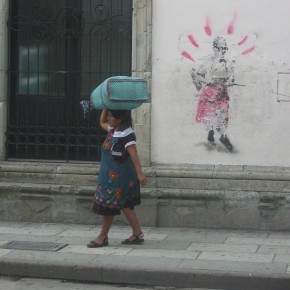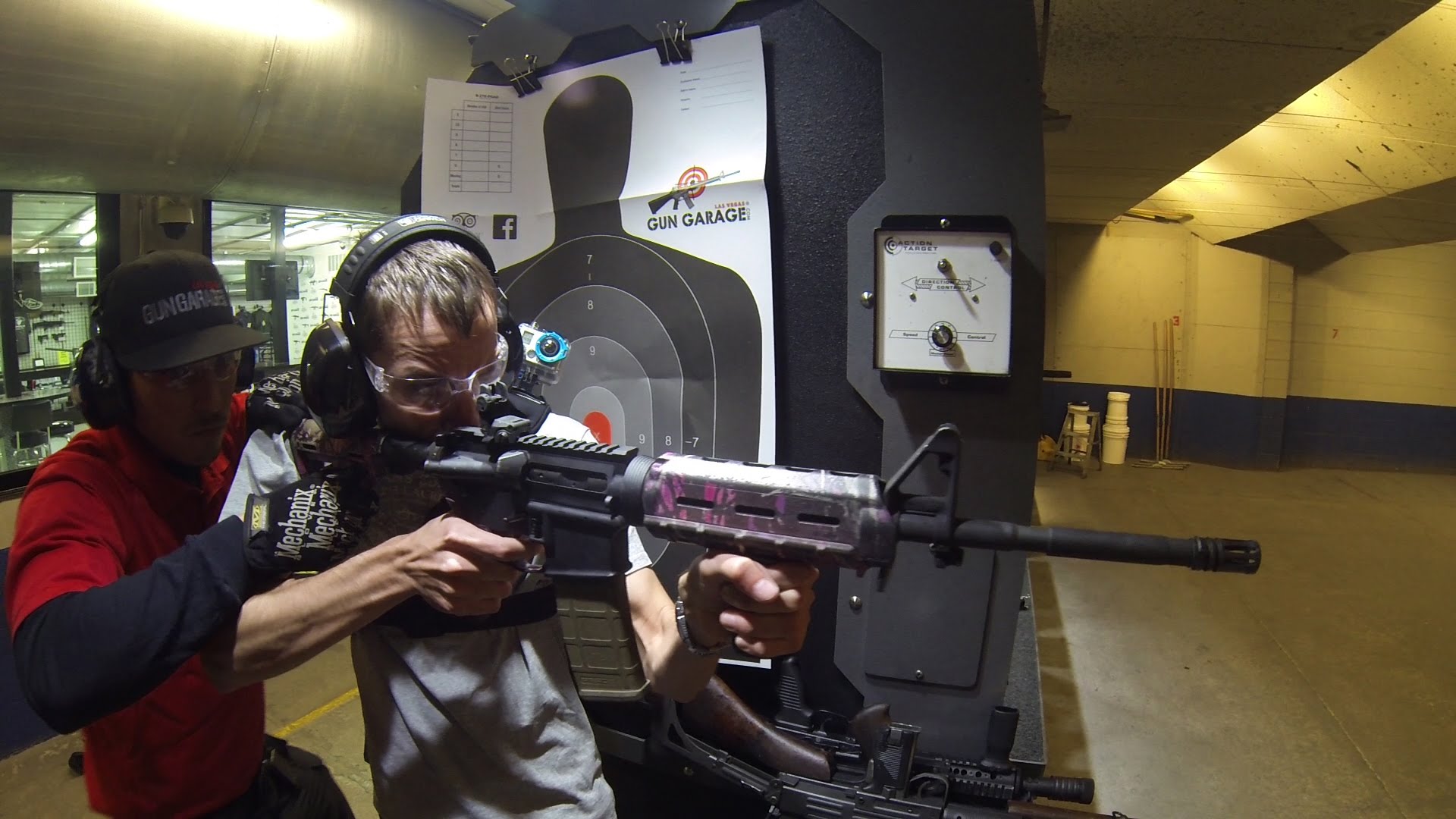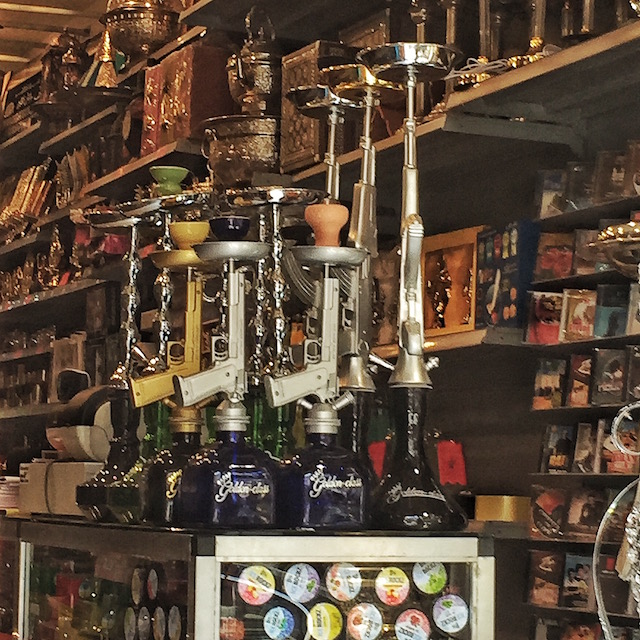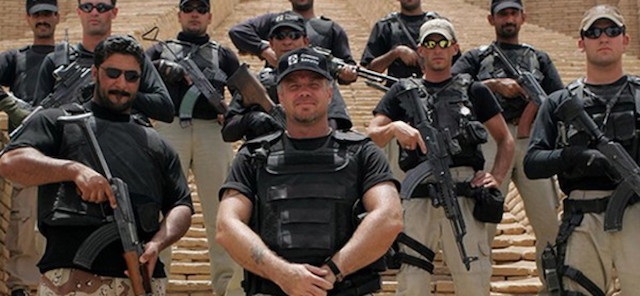Because we didn’t want our two-year-old daughter’s head to be filled with disturbing images, we had avoided them ourselves. When I headed out to pick up a video for her to watch, it had been hours since the first attack. Walking into Blockbuster, I expected to see what I always saw, with new movie releases playing on its many television screens. But every single one of them was tuned to CNN. They were showing the footage of the second plane’s strike that had just become available.
All at once, what I had managed not to see was everywhere I looked. “I didn’t know they could tune these to a television station,” I said out loud, more overwhelmed by the synchronization of images than their content. I had been able to picture the planes crashing into the World Trade Center without much difficulty. As the philosopher Slavoj Zizek would smartly point out in a short essay he circulated not long after the attacks, movies and television shows had been preparing us all for that spectacle for decades. But I’d never been in the presence of so many screens showing the exact same thing.
I’d seen video art installations of the sort Naim June Paik pioneered. And I’d been to sports bars where it was possible to watch many games at once. In both those cases, though, the ruling principle was montage, the interplay between different screens showing different feeds. The spectacle inside Blockbuster was of a radically different order. I wasn’t being moved to discern relationships or compare results, but to take a single monotonous feed to heart.
To be honest, the experience inspired a potentially offensive analogy. After confronting these screens for a few minutes, watching the plane crash into the tower over and over and over, I felt like it was crashing into me. I was completely safe, of course, about as far from a terrorist target as it was possible for an American to get. But the sequence was burned into my brain with such force that it shook me almost as badly as the news of the attacks had.
Steeped in my studies of totalitarian regimes, I couldn’t suppress the thought that this coverage was going to produce the same ideological effects as the synchronized spectacles favored by the Nazis. Yet the fact that I had wanted to suppress it troubled me. Because if I felt this way, after all the time I’d spent pondering theories of media, the likelihood of your average citizen being similarly affected was high.
Earlier, when I belatedly learned of the attacks upon arriving at my university office, my first impulse was to fear an American overreaction. The terrorists could only do so much, I reasoned. But the United States had the power to do incalculable damage in a matter of hours.
My initial anxiety slowly abated with each passing hour, as it became apparent that our military was going to take its time before retaliating. But once I’d walked into Blockbuster, this sense of relief was countered by a different sort of dread. If most Americans were watching the footage I was seeing, though under less spectacular single-screen circumstances, the long-term prospects for peace were poor.
Why was I so sure of this? The longer I stared at that array of television screens, the more I identified with the impact. And the more I identified with the impact, the more I slipped into the role of victim. When I was finally able to pull myself away from the spectacle, I walked out the door knowing that I would never again be the person who had walked in a half hour before.
What made this realization so complex is that I could perceive myself being manipulated, yet was unable to stop it from happening. Indeed, that perception merged with the footage to such a degree that it might as well have been an airplane full of fuel. If watching the moment of impact over and over was a kind of self-abuse, reproaching myself for watching was too.
The next day I walked into my postmodern literature class with no idea what I’d be talking about and the sort of confidence that makes plans seem like pointless busy-work. Conveniently, our class on Monday the 10th had focused on a Jean Baudrillard essay reflecting on the “terrorism of the real.” Now, on Wednesday the 12th we had real terrorism to discuss.
I walked over to the chalkboard and wrote something in big, block letters: “How many times can we watch the same painful scene before it becomes a source of pleasure?” I wasn’t worried about how my students would respond to this provocation. Somehow, amid all the turmoil inside and out, I’d temporarily set aside professional caution.
It was the right thing to do. This class was a smart and diverse bunch, at least by Arizona standards. I had ROTC students who had been instructed to come to class in full combat gear, one of the best women’s volleyball players in the country, students who proudly declared their homosexuality and a few who identified themselves as conservative Republicans. But on that day, they all came together as never before.
My initial question was preamble to a short lecture on Sigmund Freud’s Beyond the Pleasure Principle, which set up a rich conversation about the repetition compulsion and its role in the society of the spectacle. Suddenly, the theoretical strands that had been getting dropped during our analysis of literature were taken up with enthusiasm. By the end of that day’s session, we had come up with our own definition of “postmodern warfare”, with my least flexible ROTC student leading the way in an argument about why a country the size of the United States would have a terrible time responding to the asymmetrical challenge posed by a transnational guerrilla organization.
I left the classroom that day feeling hopeful. Not only had retaliation for the attacks on the World Trade Center and Pentagon been deferred until, it seemed, cooler heads would prevail, my students’ willingness to push past their reflexes with me suggested that it might just be possible for Americans to talk their way past the impact. We were sad, of course. But the stunning effect of those terrible images playing incessantly on the television could become a way of starting conversation instead of bringing it to a halt.
Looking back on the post-9/11 era from our vantage point today, I think it is especially important to recall such fleeting moments of optimism. Given how badly things have gone in the past decade, it is tempting for progressives like myself to misremember the aftermath of the attacks as a continuous build-up the war in Iraq, with short-sighted, xenophobic patriotism dominating the discourse from the start. Indeed, that’s how I was inclined to see things before I sat down to plot my own personal timeline of the period between September 11th, 2001 and the invasion of Iraq.
But the truth I forced myself to acknowledge in constructing this chronology was one that many of my friends had shared with me in the wake of the attacks. Before the American flag decals and magnets started appearing everywhere; before Islam was turned into a surrogate for the former Soviet Union; and before the War on Terror had started redirecting the United States budget into a dangerous corner from which it has yet to escape, there was a brief window of time in which the nation’s course didn’t feel pre-determined.
As it turned out, my fear that the American response would turn out to be far worse than the attacks proved correct. And so did the conviction, standing in my local Blockbuster Video, that no one could withstand the impact of seeing the same disturbing images over and over without identifying to some degree with their content.
Joseph Goebbels is famous for using the Nazi propaganda machine to sell the “Big Lie”, hammering the same messages home with such force and frequency that people lost their capacity to reject their falsehoods. Americans of all political persuasions have become fond of invoking this concept to explain their opponents’ techniques. Democrats promote the Big Lie that the government takes your money in order to serve you better. Republicans promote the Big Lie that the government they assail does somehow not include themselves. Examples of this mode of argumentation are legion.
What gets lost in such partisan posturing, though, is the extent to which the nation’s response to 9/11 laid the groundwork for such hyperbole. For it was the media coverage of the terrorist attacks and their aftermath that helped reconfigure that Nazi technique for our age. Precisely at a time when the internet was making it easier than ever for people to seek out alternatives to the status quo, when the establishment’s capacity to dominate the media was in danger of being overcome, we finally learned the lesson that Marshall McLuhan had been trying teach in the 1960s.
For it ultimately didn’t matter what people were saying in the immediate wake of 9/11. They could have been ranting about Arabs or having a nuanced discussion about postmodern warfare like my class. Here was an instance where the old adage that a picture is worth a thousand words actually proved inadequate. Because no quantity of words proved capable of countering the dominance of those iconic photographs and video of the World Trade Center on fire and then collapsing in a mountain of dust.
Think for a moment about how internet search technology works. If I wanted to use one of those shots to accompany this piece, Google would turn up an inexhaustible reservoir of them. However finding some other way of illustrating the event proves a far more difficult task. There may not be much political consensus in the contemporary United States, but our searches, in effect, create one for us. We “agree” in other words on what to see when we picture an event like 9/11, even if we have never formally given our consent.
Determined not to contribute once more to this repetition compulsion, I set out yesterday to find a different sort of image to accompany this piece. As it so happened, my itinerary for the day brought me to the very site where I’d first witnessed media coverage of the attacks. Only now it’s Beyond Bread, a local sandwich shop. Blockbuster closed its doors there a while back, part of a nationwide reduction in outlets that the financially troubled corporation was forced to make.
Like Borders Books and Music and a great many independent book, record and video stores, our local Blockbuster couldn’t survive the post-9/11 era. The culture had changed too much. Because when people can access the images they want to see — or at least the ones they think they want to see — without paying for the privilege, when they have the illusion of controlling the stream of images by sheer force of desire, they aren’t going to shop for them.
That surreal experience I had of standing inside Blockbuster, surrounded by screens not showing any of the content the store was currently supposed to be promoting, was a premonition of the store’s doom. I wasn’t just witnessing the end of Americans’ false sense of security, standing there with my mouth agape; I was witnessing the end of a lifestyle in which going out to rent a movie seemed like a good way of avoiding the news.
As I left Beyond Bread, musing on the oddness of having just ordered a submarine sandwich at the same spot where I first saw media coverage of 9/11, I noticed that a small portion of the original Blockbuster store remained unoccupied. Someone is doing work on one end of the building. Another business may be moving in, despite the abysmal state of the economy. But what caught my eye was the door at the corner.
Here, in the block capitals that had once been burned into the brain of most Americans, was the legacy of a different sort of loss. Not the spectacular implosion of a world-famous structure, but the erasure of an obsolete way of relating to the world of images. It seemed peculiarly fitting that the text was directing customers to the emergency exit. This was the image with which I would commemorate the tenth anniversary. Because that’s what we’re really searching for, no matter how many times we stare at what we’ve already seen: an exit to the state of emergency in which we’ve been held captive since 9/11.
Later, after I returned home with my camera, I realized what I’d failed to notice in the excitement of taking pictures. Between the door and the mountain in the distance of the photographs I took of Blockbuster’s old emergency exit is the stretch of Ina Road on which six crosses stand, honoring the people who lost their lives January 8th during the assassination attempt on my Congresswoman Gabrielle Giffords. The Safeway where the shooting took place is just around the corner from Beyond Bread. But the site itself is hidden by the building and the memorial is obscured in my photographs by reflections. Somehow, that pleases me just as much as the fact that I found a way not to pair these words with what images from that fateful day ten years ago.
The world we live in today is one in which it is almost impossible to tune out the dominant images of the moment. Messages in words can be avoided. Indeed, it’s easier than ever before to restrict one’s listening and reading to sources that match one’s ideological predilections. But images are another matter. When they attain the status of those iconic shots of the World Trade Center, there is no purging them from our searches. We see them even when we close our eyes.
Photograph by Charlie Bertsch
